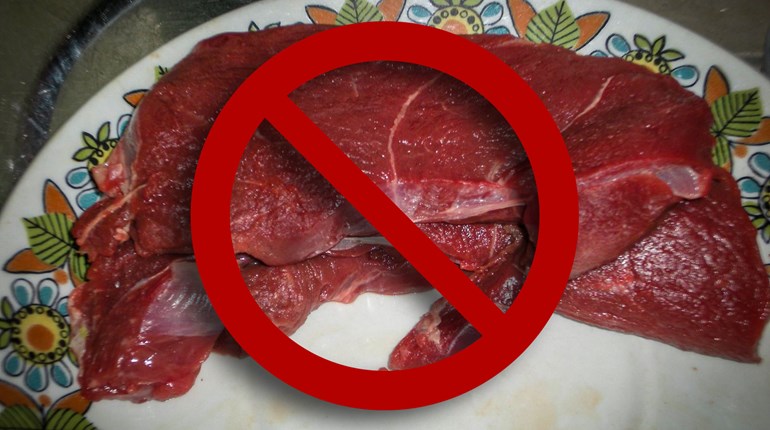
The Potential Crisis
Like most hunters, I pursue game not just for the thrill of the chase, but due to a love of meat. In a cruel twist of irony, spending time in the woods can put you at risk for a lifetime meat allergy courtesy of the Lone Star Tick bite.
The Facts
According to various news outlets, researchers at the University of Virginia have theorized that a recent string of adult-onset meat allergies are the result of the tick’s salvia. Over 1,000 cases have been reported thus far. A friend of the BullShooters who resides in Central Virginia has fallen victim to this evil insect’s bite and confirms that he has a serious allergic response every time he eats meat. The mere thought makes me shudder.
The Geography
According to the Centers for Disease Control, the Lone Star Tick inhabits most of the Eastern and Central United States. Unless you live and hunt in the upper Midwest or West, this little devil could strike you next.
The Hunter’s Dilemma
As hunters, we spend more time outdoors that others so we are theoretically more at-risk to bites than the general population. Hunting, scouting, preparing hunting areas, and dog training put many of us in the woods virtually year-round.
Preventing Bites
According to CDC, the best way to prevent tick bites (other than avoiding “wooded areas”) is to use products containing DEET and/or Permethrin. DEET is found in most common insect repellents and you should use products that contain 20% or more of the active ingredient. Permethrin is sprayed onto clothing, boots, and gear and can withstand several washings. I spray all of my hunting gear with Permethrin before every season. Don’t forget to treat non-hunting clothing that you may wear while hanging treestands, etc.
A Conspiracy?
Despite the claims of many who suggest that the Lone Star Tick was genetically-engineered by PETA or HSUS to turn us meat-eating hunters into tree-hugging vegans, there is no evidence to suggest that this is the case.
The Ruling
All signs point to a real allergic response brought-on by this tick- take the time to protect yourself and you’ll be eating good protein for many seasons to come.





































